Podcast: Play in new window | Download
Here are some recent happenings, straight from the shop at Classic Aviation, LLC:
Birds in the cowling!
It’s bird nest season, and they are driving airplane owners crazy by building nests on top of engines.
Listen to today’s episode to hear about a Bonanza owner with 2 nests on his engine after a short stay at Shenandoah valley.
And here’s a Cessna 182 that came into the shop for some maintenance. When it’s nesting season, the birds don’t waste any time making a safe place for their eggs.
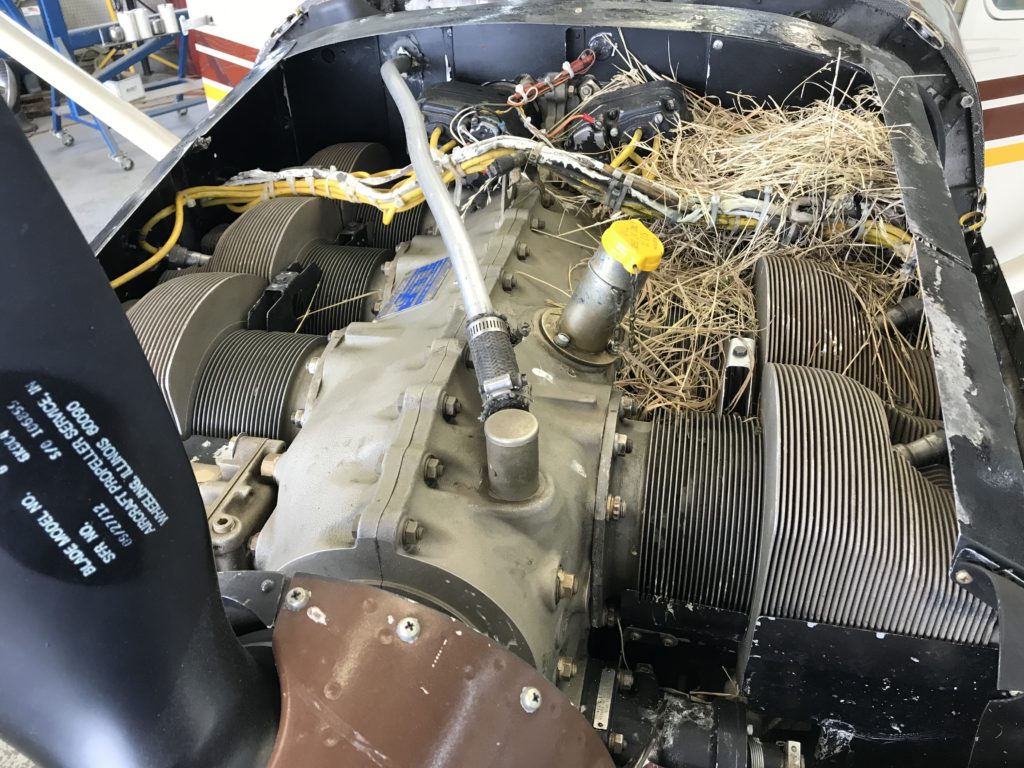

Corrosion on the battery terminals!
Here’s what the battery terminals looked like on a Cessna 182 that stopped at KSHD due to an intermittent electrical charging system:
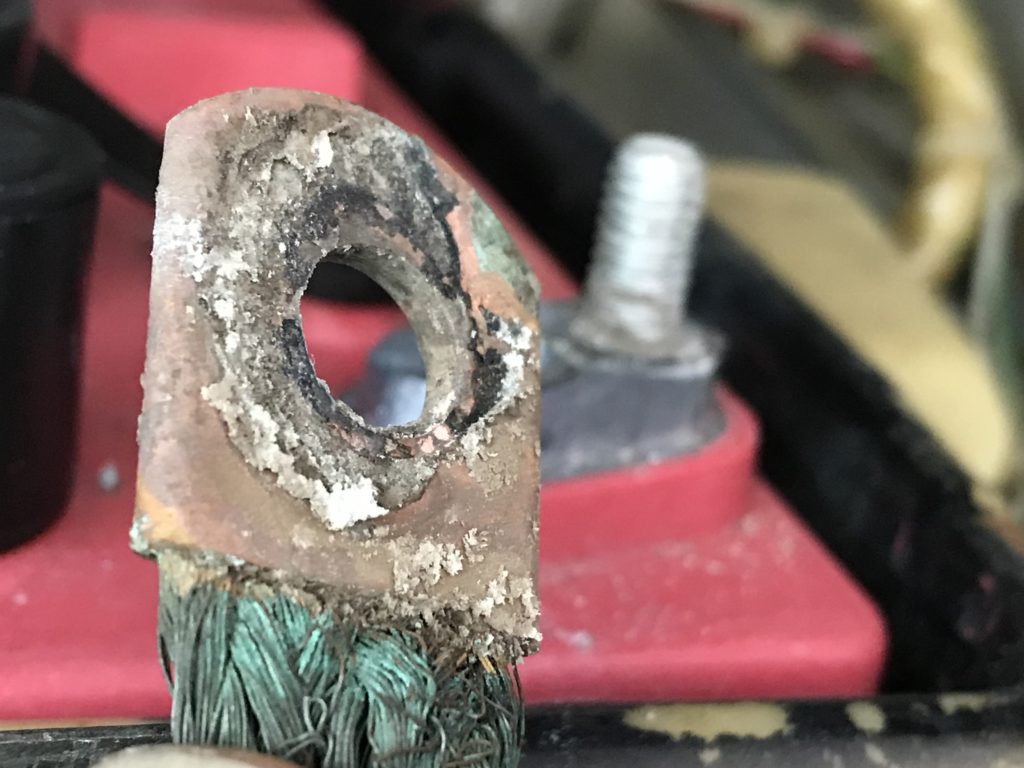
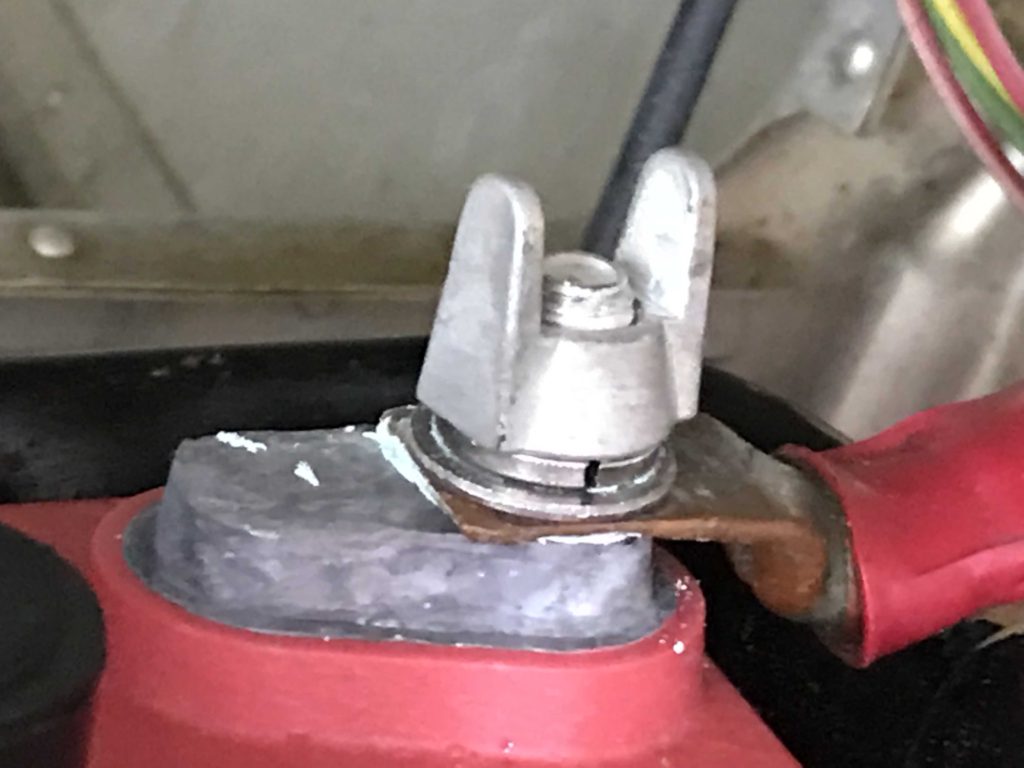
Reminder: As an airplane owner, you can help ensure reliable electrical system operation by keeping your battery terminals free of corrosion.
It’s a good idea to check these terminals at least once in between your annual inspection, and apply some anti-corrosion spray.
Rough engine: Is it spark plugs, or a magneto?
Here’s a spark plug from a Piper Apache that had a rough mag check.
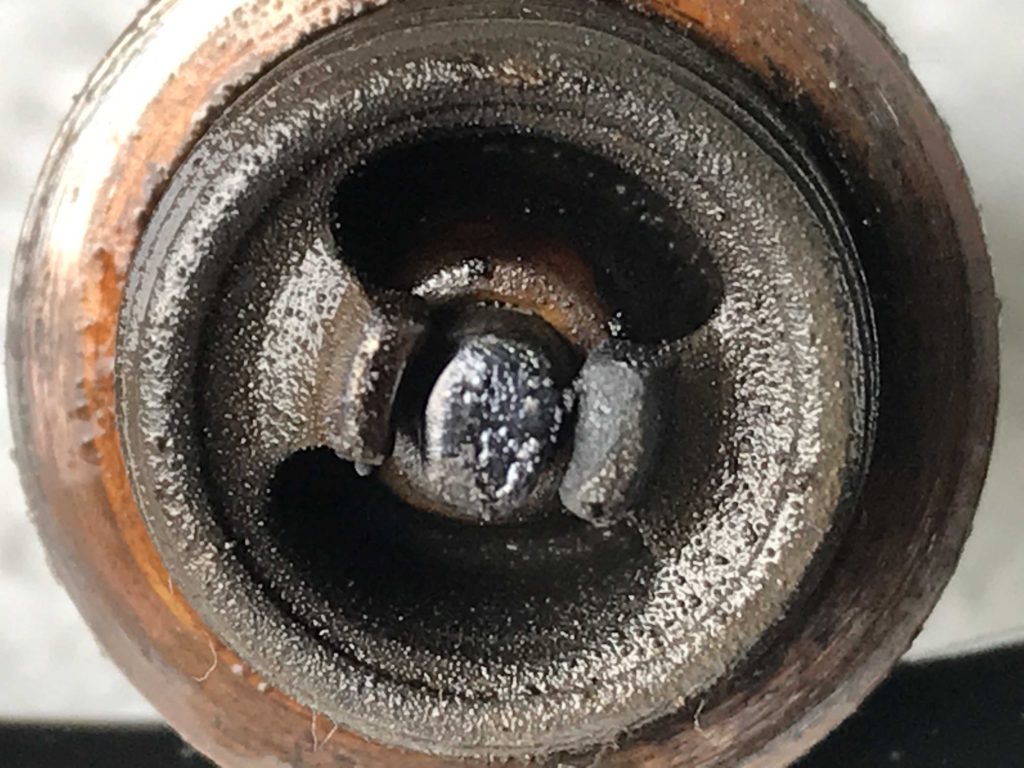
I received an email from the flight instructor and he was suspecting a magneto problem.
However, after some troubleshooting by running the engine, watching the JPI engine monitor, and removing the specific, affected spark plugs, it turned out there were actually 3 fouled spark plugs!
One way to avoid fouled spark plugs, is to aggresively lean the mixture while taxiing around on the ground at low RPM’s.
It’s amazing how much you can lean the mixture on the ground at 1000 RPM and still have the engines run smoothly during taxi operations.
AND, with the mixtures this lean, there is little chance of forgetting to enrich them for takeoff, since the engines will likely not run well if advanced to takeoff power.
For this reason, during taxi operations, it’s good to lean until the engine almost quits, and then enrichen enough to run smoothly.
If you only lean slightly for taxi operations, you risk forgetting to set the mixtures for takeoff.
Here is how I was able to set the mixture controls in that Piper Apache on the ground at 1000 RPM’s, for smooth ground operations.
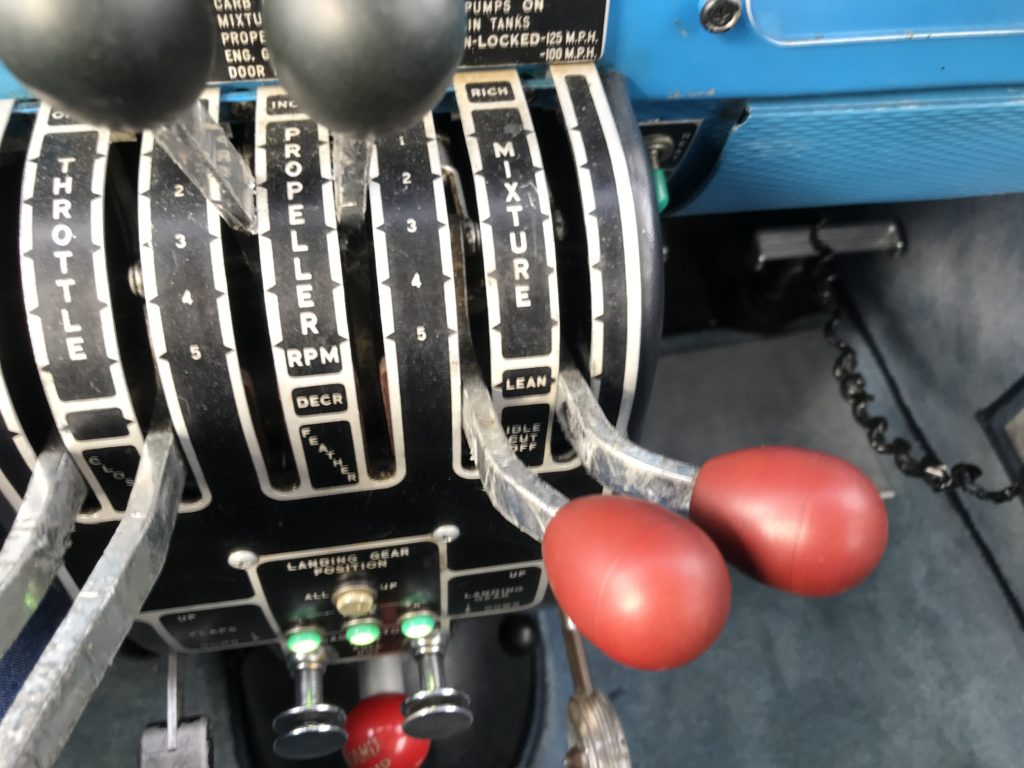
So, that’s all for this week.
Remember:
Keep the birds out of your cowling if your airplane is parked on the ramp.
Keep your battery connections free of corrosion for reliable electrical system operation.
And consider how you can lean your idle mixture for cleaner spark plugs during taxi operations.
Have a great week!


Dean, thank you for all you are doing with this podcast. I have been performing most of the maintenance on my 1962 C-182 since my purchase of it in 1990 and closely read all that Mike Busch publishes.
Regarding this Podcast 116: It really bothered me that a CFI could look at a JPI engine monitor showing rapidly falling EGT on Cyl.#1 when on the R mag during a preflight mag check and to summarize that it “…seems like the mag” was the issue. And then, to be honest, I was disappointed when YOU had to trace the wire from the right mag to cylinder #1 in order to figure out if it was the top or bottom plug.
I have the luxury of maintaining a single aircraft over the past thirty years/2600 hrs, and know for certain that if Cyl. #1 drops out on a right mag check that I can go directly to the upper plug, as the right mag fires the upper right and lower left plugs on my Continental O-470. And, I certainly know that it would not be a mag issue. I perform in-flight mag checks on every flight I take as this gives a better reflection of overall ignition system health than 1700RPM on the ramp.
Secondly, when the Apache had fouled BOTH plugs on one cylinder it made me wonder how many highly abnormal mag checks and asymmetrical preflight and in-flight JPI indications that pilot had experienced before you got your hands on it. You might be doing that client a favor by instilling in him that he is responsible for the airworthiness of his aircraft and that a deeper understanding of his engine monitor might save his engine some day, if not his life. He needs a little time with the Owners Manual.
In addition, please let your listeners know that they can go to: https://www.aopa.org/training-and-safety/air-safety-institute/valve-safety and download Adrian Eichhorn’s ‘Green Means Stop/Burnt Pizzas are OK’ poster. It has nine excellent photos of exhaust valves taken through a borescope. I have my poster laminated on my hangar wall.
I’m looking forward to meeting you someday at your hangar or at a Airventure Forum.
Thank you Chris! Excellent information… and yes, I hope we can meet in person one day.